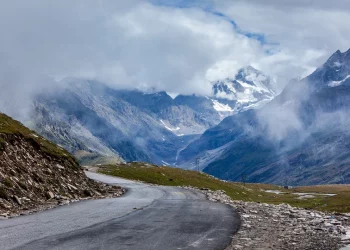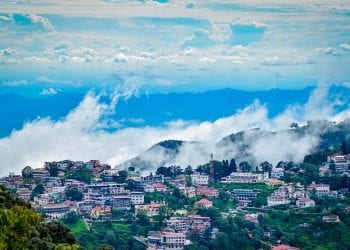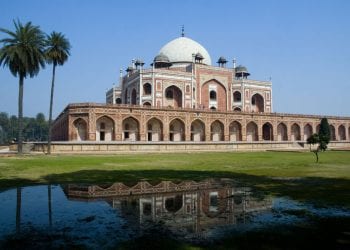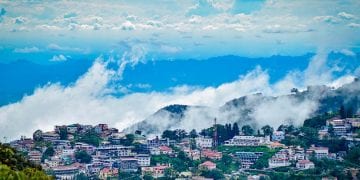Places to Visit in Pink City of Jaipur
Jaipur, the capital of Rajasthan, is home to two world heritage sites. This ‘Pink City’ is nestled in the lap of Aravalli Hills, one of the world’s oldest mountain ranges. The three forts of Amer, Jaigarh and Nahargarh situated on the Aravallis once formed a defense ring for Jaipur. The city is dotted with impressions of a historic and royal legacy.
Top 35 Places to Visit in Jaipur
- Jantar Mantar
- Amer Fort
- Sheesh Mahal
- City Palace
- Hawa Mahal
- Jaigarh Fort
- Nahargarh Fort
- Jaipur Wax Museum
- Jal Mahal
- Gaitor Ki Chhatriyan
- Panna Meena Ka Kund
- Galtaji
- Chulgiri Jain Temple
- Smriti Van
- Jawahar Kala Kendra
- Gyan Musuem
- Anokhi Museum of Hand Printing
- SRC Museum of Indology
- Albert Hall Museum
- Birla Mandir
- Digamber Jain Temple
- Isarlat Swargasuli Tower
- Abhaneri
- Bhangarh
- Chandlai Lake
- Amer Sagar
- Nahargarh Biological Park
- Bhandharej
- Kanota Dam
- Galta Temple
- Markets
- Rambagh Palace
- Sisodiya Rani Bagh
- Jaipur Zoo
1. Jantar Mantar
A UNESCO World Heritage site, Jantar Mantaris amongst the top places for sightseeing in Jaipur. A paradise for science enthusiasts, Jantar Mantar is an observatory with 19 architectural astronomical instruments. It was built under Jai Singh II by 1734 to correct the then zij (Islamic astronomical table). The observatory has instruments that operate in all the three basic classical celestial coordinate systems. Vrihat Samrat Yantra consists the world’s biggest stone sundial. One of the world’s largest astrolabe is found at Yantra Raj Yantra.
2. Amer Fort
Another UNESCO World Heritage Site, Amer Fort is an ancient royal fortification spread across a hilltop in the Aravalli range. Made of red sandstone and marble, it is built in Rajput and Mughal architectural style. The fort was originally built under Man Singh I around 1592 AD and later developed by successive Kachwaha rulers. Famous attractions here include the Sun Gate, Jalebi Chowk, Ganesh Pol gate, Tripolia gate, Diwan-i-Khas (Hall of Private Audience), Diwan-i-Aam (Hall of Public Audience) – all popular for their architectural grandeur. The Sila Devi temple is known for its Durga idol. Charbagh is a Mughal-style garden centered in the courtyard through which water flows in an open crisscrossing channel. The adjacent room, Sukh Niwas (Hall of Pleasure) has a sandalwood door and cool environment. The palace of Man Singh I is the oldest part of the fort. An island garden called Kesar Kyari (Saffron) sits in the middle of Maota Lake flowing at the base of the fort.
3. Sheesh Mahal
Sheesh Mahal (Mirror Palace) is an astonishing display of exquisite mirror work. Built under Man Singh, the monument was completed by 1727. A mirror mosaic is created using multi-mirrored ceilings and glass inlaid panels. A captivating view of the Maota Lake is visible from this hall.
4. City Palace
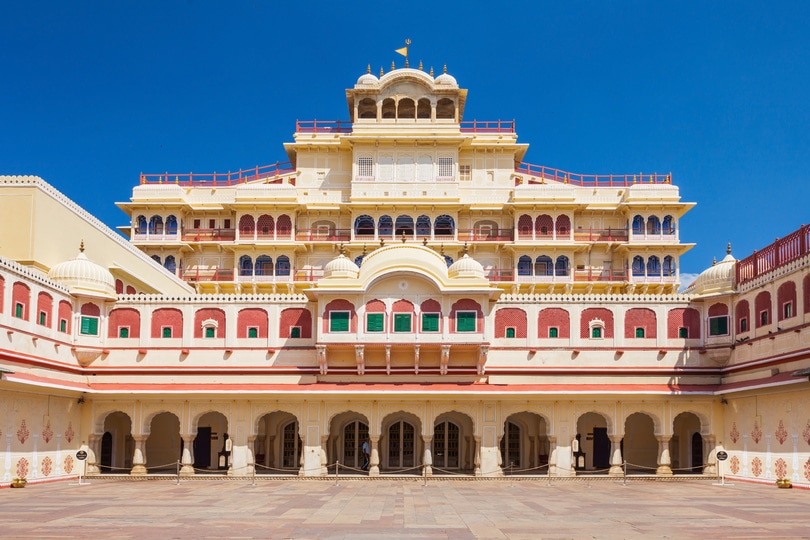
The palatial City Palace is a complex of palaces built between 1729 and 1732. It was once the seat of the king of Jaipur. The design incorporates Shilpa-Shastra of Indian architecture influenced by Rajput and Mughal styles. Mubarak Mahal (Auspicious Palace) was a as reception center of the royals. Today, it is a museum showcasing a range of textiles like the royal attire, Kashmiri pashminas, and sanganeri block prints. Chandra Mahal, a seven-storied building, is the most commanding palace in the complex. The flag of the royal family is hoisted atop the palace where some royal descendants continue to reside. The Diwan-i-Am ceiling is engraved with original handwritten manuscripts of Hindu scriptures. The Diwan-I-Khas houses the world’s biggest sterling silver vessels. Baggi Khana is a museum with a rich collection of antique carriages and palanquins. The Victoria baggi (horse-carriage), a gift for the Maharaja from Prince of Wales, is a popular attraction.
5. Hawa Mahal
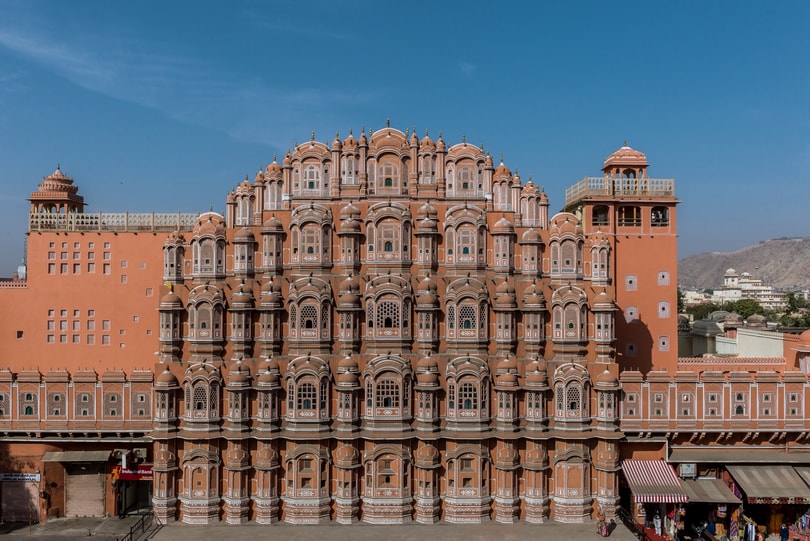
Hawa Mahal (Palace of Winds) is a palace built in 1799 on the corner of City Palace. The magnificent exterior of this five-storey monument resembles a beehive honeycomb – 953 tiny jharokhas (windows) carved with delicate latticework. This architectural design creates the Venturi effect (doctor breeze) – cool air passes through the entire structure. Built in red and pink sandstone, its architecture reflects a blend of Hindu Rajput and Islamic Mughal style.
6. Jaigarh Fort
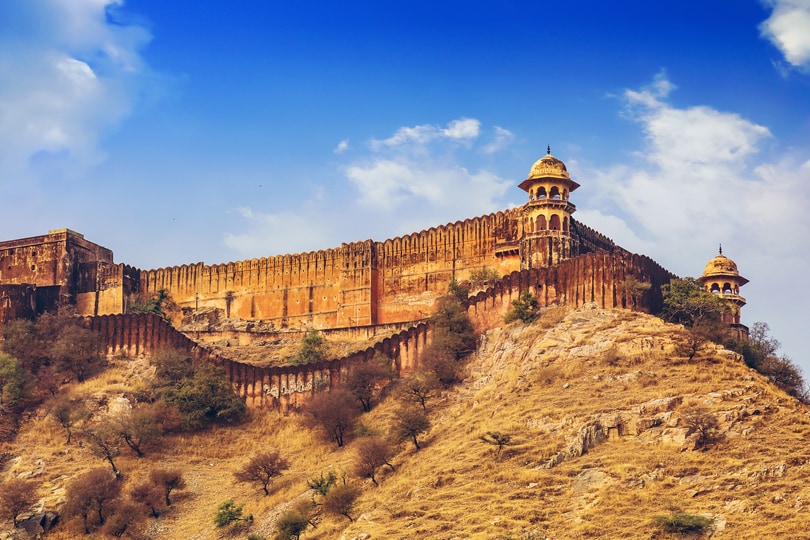
Also known as Victory Fort, the Jaigarh Fort is situated on the Cheel ka Teela (Hill of Eagles) in the Aravalli range. Made of red sandstone, Jaigarh fort has a similar architectural style as Amer fort. Both the forts are connected by a subterranean passage and considered a single complex. Jaigarh fort was the hub for artillery production of Rajputs. A prominent feature of the fort is the Jaivana – manufactured in 1720, it was then the world’s biggest cannon on wheels. The grand Awani Darwaza (Earthly Door) gives a spectacular view of the serene Sagar Lake. An armory chamber exhibits a wide range of guns, swords, muskets and shields.
7. Nahargarh Fort
Nahargarh, meaning ‘abode of tigers’, is a historical monument on the edge of Aravalli hills. Built as a retreat by Maharaja Jai Singh in 1734, it features an Indo-European architectural style. The fort witnessed historical events like signing treaties with the Maratha rulers who fought against Jaipur in the 18th century. During the Indian Revolt of 1857, Nahargrah Fort was used as a hiding place for British officials. The majestic ‘Madhavendra Bhawan’ consists of suites for the king and his twelve queens. Nahargarh fort has several other places for sightseeing in proximity.
8. Jaipur Wax Museum
Located next to the Nahargarh fort, the Jaipur Wax Museum is quickly gaining recognition as a museum of international standards. Wax and silicon statues of globally renowned personalities are exhibited against a unique backdrop in the ‘Hall of Icons’ room. The ‘Royal Darbar’ is a majestic courtroom with statues of Rajasthan’s royal ancestry dressed in their traditional attire. Intricate mirrorwork using the thikri glass creates an optical illusion inside a replica of the Sheesh Mahal. Other attractions include an antique palkhi (palanquin) and a royal buggy (horse-carriage).
9. Jal Mahal
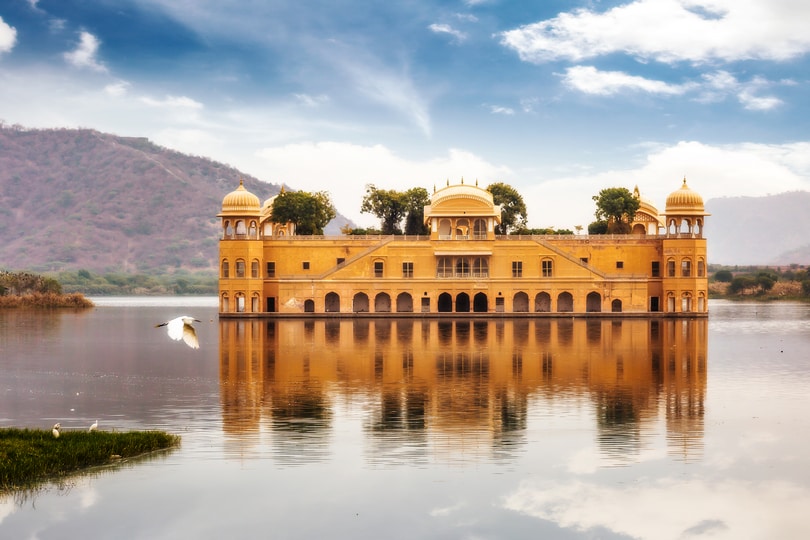
Jal Mahal (Water Palace) is situated in the center of the tranquil Man Sagar Lake with Nahargarh hills in the backdrop. Made of red sandstone, the architecture of the palace flaunts a mix of Rajput and Mughal style, with a Bengali style rectangular chhatri (memorial) on the roof. This site was renovated by Jai Singh II in the 18th century. Today, it is not open to visitors, but can be viewed during a visit to the Amer Fort.
10. Gaitor Ki Chhatriyan
Gaitor houses a complex of tombs and temples as a royal crematorium of the rulers (Maharajas) of Rajasthan. Beautifully carved cenotaphs dedicated to famous kings are the main attraction. The cenotaphs are umbrella (chhatri) shaped, giving the place its name Gaitor Ki Chhatriyan.
11. Panna Meena Ka Kund
One of the most well restored baori (stepwell) found in Jaipur, Panna Meena Ka Kund is popular for its striking symmetrical stairways. Built in the 16-century, an interesting legend about this architectural grandeur is that one can’t use the same stairs to go up and down. Adding beauty to geometry are the niches between the stair levels – for one to sit and enjoy the view. Definitely one of the best places for sightseeing in Jaipur!
12. Galtaji
Galtaji is an ancient pilgrimage site housing a complex of temples in a narrow crevice of Aravalli hills. A natural spring flows from atop the hill into a series of kunds (reservoirs) where pilgrims bathe. It is amongst a significant retreat center for the Ramanuja sect. The complex of Sita Ramji temple is colloquially called the Monkey temple (Galwar Bagh) – famous for its gathering of monkeys.
13. Chulgiri Jain Temple
Perched almost a 1000 flight of steps atop a hill, the Chulgiri Digamber Jain Templesite offers a picturesque aerial view of the city. Built in 1953 by a Jain priest, the Chulgiri temple houses three imposing sculptures – statutes of the three most popular Tirthankars (spiritual teachers). A 21 foot tall white stone statue of Lord Mahavira is covered by a 60 foot giant dome. The temple rooftop has an elaborate Jain Yantra (sacred phrase) embossed on a heavy copper plate.
14. Smriti Van
Smriti Van is a biodiversity forest developed on an area destroyed during the 1981 floods in Jaipur. In the memory of loved ones, this park was built as a state government initiative in 2005. The park sets an exemplary display of drainage treatment – by planting aromatic plants like mogra, juhi, raat-rani, and champa to eliminate the foul smell. It also houses a herbal garden, hi-tech nursery, and an eco-environment museum.
15. Jawahar Kala Kendra
Jawahar Kala Kendra is a multi-arts center was established in 1986 for preserving traditional arts and crafts of Rajasthan. The architectural style is based on ancient Navagraha Mandala principle of Vastu Shastra. The kendra (center) consists of an amphi theatre, a closed auditorium, a library, museums, art galleries, and an art studio. It also includes a cafeteria and a pergola for visitors to relax.
16. Gyan Musuem
Gyan Museum is a unique private museum is built by two sons in memory of their father, jeweler Gyan Chand Dhaddha. His splendid collection is showcased in an aesthetically designed area with controlled lighting. The museum houses over 3000 antiques – vintage textiles, jewelry, paintings, inscriptions, spectacles and objet d’art. Visitors can also relax in a quiet seating area equipped with books.
17. Anokhi Museum of Hand Printing
The Anokhi Museum of Hand Printingis renowned for its historic block printed textiles exhibited in a brilliantly restored haveli (mansion) in Amer. The diverse collection displays a range across the craft – of regional textiles, natural and chemical dyes, block printing and carving tools, gold and silver printing, and wooden and brass blocks.
18. SRC Museum of Indology
Built in 1960, the SRC Museum of Indologyexhibits a fascinating private collection of Acharya Ram Charan. On display are scrupulous manuscripts printed on different mediums like cardamom peel, a bark stick, palm leaves, and paper. It is also a rare repository of tantric items, super natural objects, and over a thousand paintings on serpentology.
19. Albert Hall Museum
Established in 1887,Albert Hall Museumis the oldest museumin Jaipur. Situated in Ram Niwas Garden, the museum displays remarkable Indo-Saracenic architecture. A rich collection of armors, sculptures, jewelry, musical instruments, and textiles showcase different art forms like pottery, clay, marble, crystal, wood and metal. The highlight of the museum is an Egyptian mummy, and a vast collection of iconic coins from different historical periods.
20. Birla Mandir

Located at the base of Moti Dungari hill, Birla Mandir is dedicated to Lord Vishnu (Narayan) and his consort Lakshmi. Made of white marble, the temple has three giant domes representing three different approaches to the religion. Historical figures from varied religions – Socrates, Confucius, Christ, Zarathustra, and Buddha – are depicted on the exterior walls. A large marble panel in the interiors depicts mythological events.
21. Digamber Jain Temple
Digamber Jain Mandir, Sanghiji is a 10-century Jain temple in Sanganer. Made of red stone, the temple displays fine carvings. It is home to a 4000 year old idol of Adinatha – their principal deity. This seven storied temple has eight sky-high shikharas (pinnacles) and a small underground temple. The complex also consists a dharamshala (resting room) equipped with a bhojanalaya (restaurant).
22. Isarlat Swargasuli Tower
The 7-storey high Isarlat Swargasuli Tower (Victory Tower) was once the tallest building in Jaipur. Originally built to commemorate a war victory, it was later also used as a watchtower to guard the royal family residence. With circular staircases, its architectural style reflects Jaipuri and Mughal elements. Almost all the important monuments can be spotted from atop the tower.
23. Abhaneri
It is a tiny town situated at a distance of 95 km from Jaipur in the district of Dausa. Abhaneri was formerly known as Abha Nagri. It is noted for Chand Baori, the stepwell and Harshat Mata Temple. The temple is one of the main attractions of Abhaneri and is considered best among Jaipur’s tourist attractions. The temple was devoted to the goddess Harshat Mata. The step well is one of the attractive landmarks in Abhaneri. It was devoted to the Harshat Mata. It is India’s biggest and deepest lake in India. It is for everyone who is fascinated about step wells! It is an outstanding model of water conservation, strengthened on all sides and displays 3500 small steps over 13 storeys.
24. Bhangarh
It is located at a distance of 80 km from Jaipur in the central city of Alwar. It is famous for ancient ruins. The Bhangarh Fort was constructed by Man Singh and is one of the most famous Haunted Places in India. Legend has that there were many paranormal experience and incidents in this fort. Even now you can see that as the sun begin settling down in the sky, the palace of Bhangarh starts getting evacuated. The wilderness and solitude keep this site placed in one of the spookiest spots in the world.
25. Chandlai Lake
The Chandlai Lake is located 2 km away from the central Kota highway. You have to take a right turn just before reaching the Chandlai Toll Plaza while driving from Jaipur. While comparing to the Jal Mahal Lake, this one is no less beautiful than an offbeat one. You would love to hit this place for peace and natural charm. It is a 140-year-old interior water body famous for bird watching. No wonder, there will be a tremendous rush at Jal Mahal. But if you are travelling for a honeymoon trip, would you fancy being in a crowded area with your partner, or would you prefer a region which is snuggled in a corner and gratified with the perfect combination of romantic serenity, privacy and a soft breeze?
26. Amer Sagar
Amer Sagar is a 17th Century Lake that was the main source of water for forts of Amer and Jaigarh in old times. Most folks in Jaipur do not really remember about this area. Amer Sagar is situated near the famous Amer Fort, which lies between Kheri Gate and the Anokhi Museum. This is the place for you if you love monsoon season. Tucked away behind Kheri Gate and the Anokhi Museum, the top Sagar Lake can be visited by car. But the real adventure begins when you cross the front side and stroll on the side path to explore the secluded beauty of lower Sagar Lake. The Lower Amer Sagar is a hidden areacapped by huge Aravali ranges;It can be seen neither from the front view nor from the city vision. On your way, you will look at the locals, pilgrims and animals which will surely add on to your adventure. You will actually encounter the composed life of locals away from the commotion of the city. It is a perfect place if you want to run away from the capital or simply sit and relax for a while.
27. Nahargarh Biological Park
Nahargarh Biological Park is packed with dense tropical rainforests. Those who have toured the western ghats of India then you must visit this place to see distinct biological diversity. Lions and tigers are clearly visible here. There are more than 200 diverse species of birds and 450 varieties of flora and fauna. This site is located on the outskirts of Jaipur, at Jaipur-Delhi Highway. Nahargarh Biological Park has spread over 7.2 sq km of Nahargarh Sanctuary Park.
28. Bhandharej
History recognizes those who did something exceptional through their lifetime, but amidst this, some unsung warriors left behind, about whom nobody discusses. Bhandarej is one of those areas which played an influential part in the history of India. The village is located just 62 km from Jaipur in the district of Dausa, Rajasthan. Filled with ancient temples and buildings from the pre-medieval era the town represents the history that dated backs to the 11th century. The Bhandarej fort is an astonishing tourist sport standing splendidly with all the stories of its building. Here, many kings and rulers lost their lives in a battle and are remembered for their valour. Along with its strong history, Bhandarej is also known for its unusual sculpture, lattice work and terracotta vessels during the country. Tourist here can encounter the rich tribal culture of the place and visit here for the exceptional carpets and pottery that are produced here.
29. Kanota Dam
Situated about 15 km from Jaipur, away from the National Highway 11 it is differently known as Agra Road, and is one of the best offbeat places to see while in Jaipur. Covered by the Aravali hills with a cover of blue skies, Kanota dam is a very calm place outside the palaces that makes Pink City as great as it is. Built over the river Dhoond, this earthen dam is a complete place for a romantic date or vacation and can be counted as one of booming Jaipur’s famous places. Moreover, it is a visual feast to witness the strong flow of the river gushing out of the gates and giving power to the turbines to generate power for the surrounding cities and villages. The maximum water level at Kanota Dam is 1191 feet, and it has a catchment zone of 402 square kilometres. Luni and the other rivers of Kutch and Saurashtra, flowing in the west direction, form the basin of this dam.
30. Galta Temple
The heritage Galta Temple is very famous among the locals for its seven natural water springs. Many people come from across the state to the temple to take a bath in the holy springs of the natural waters. The temple is situated just about 10 km from Jaipur and is an old Hindu pilgrimage site. The water tubs or the natural springs are known as ‘kunds’, and it is believed that Galta Spring, the one which is the most spiritual out of the seven, never ran dry. On visiting this place, you will find a big rock in the form of a cow’s head, which is called Gomukh. The water springs out of Gomukh in clear form and supplies into the tanks. When one sees the temple from outside, it resembles a castle, with the structure being built in pink sandstone, and the entire area is surrounded by hillocks.
31. Markets
Shopping in Jaipur is amongst the most fun things to do!The flea market of Bapu Bazaar is a one stop destination for all Rajasthani items, but particularly popular are the camel skin mojris (footwear). Johari means jeweler, and so at Johari Bazaar you can watch live craftsmanship of ornaments, gems and jewelry. A wide range of lac jewelry is the highlight of Tripolia market. Located within Tripolia is Maniharo Ka Rasta, dotted with sops selling a colorful assortment of bangles.
The pink city of Jaipur has played a significant role in Indian history. Bustling with Jaipur’s tourist attractions, being the land of Maharajas, this beautiful city is dotted with many forts, palaces, temples in Jaipur, etc. Jaipur, the desert capital of India, commonly the land of forts, palaces, lakes, kings, alluring architecture is the soul of Rajasthan. The rich Rajput culture and their remarkable past are beautifully shown in the lifestyle and the infrastructure of the tourist places in Jaipur. The marvelous tourist places in Jaipur boasts of structures, that are praised for unique architectural brilliance and saga associated with the same. The places mentioned above are not such popular attractions of Jaipur which are equally beautiful with rich heritage and history.
32. Rambagh Palace
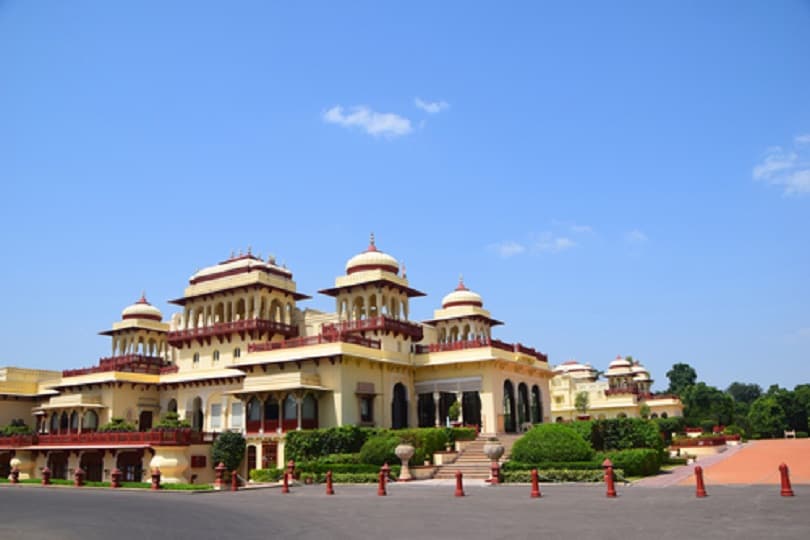
It is an elaborate converted palace, dating back to 1835, this lavish 5 Star Taj hotel is 4 km from both Gandhinagar Jaipur train station, and art and history exhibits at the Albert Hall Museum.
The Rambagh Palace is the former residence of the Maharaja of Jaipur and now converted into a hotel, located 8 km outside the walls of the city of Jaipur on Bhawani Singh road.
Luxe rooms feature free Wi-Fi and flat-screen TVs, plus minibars, and tea and coffee making facilities. Lavish suites add living rooms, dining areas and/or marble bathrooms. Room service is available 24/7.
Dining options include 2 genteel restaurants, 2 bars and an open-air cafe. There’s also a gym and a spa, as well as indoor and outdoor pools. Yoga and meditation classes can be arranged.
- Famous for: being a Palace Converted to a 5 Star Hotel
- Location: Bhawani Singh Rd, Rambagh, Jaipur, Rajasthan 302005
- How to reach: 13 km from Jaipur Airport near Sanganer
33. Sisodiya Rani Bagh
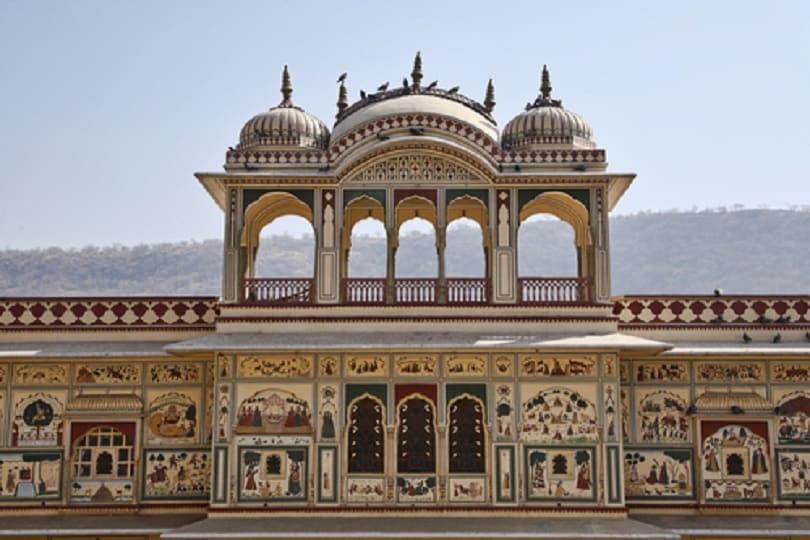
Sisodia Rani Bagh (translated as the garden of Queen Sisodia) is a palace garden 6 km from Jaipur city in Rajasthan. It was built by Maharaja Sawai Jai Singh II in 1728. Sisodia was the Udaipur princess who married Jaipur King, Sawai Jai Singh.
The garden is famous for its flora wealth, natural attractions and for relaxation. This garden holds beautiful water fountains, pavilions, flowerbeds, galleries, murals, water channels and much more.
The place consists of tiered multi-level gardens with fountains, watercourses and painted pavilions.
- Famous for: Nature Lovers, Experience Seekers, History Buffs, Photography Enthusiasts
- Location: on the Jaipur-Agra highway, 10 km from the city
- Timings: 8:00 AM – 6:00 PM
- Entry Fee: 50 – 100 INR Per Person
- When to visit: July to March
- Time Required: 30 to 45 min
34. Jaipur Zoo
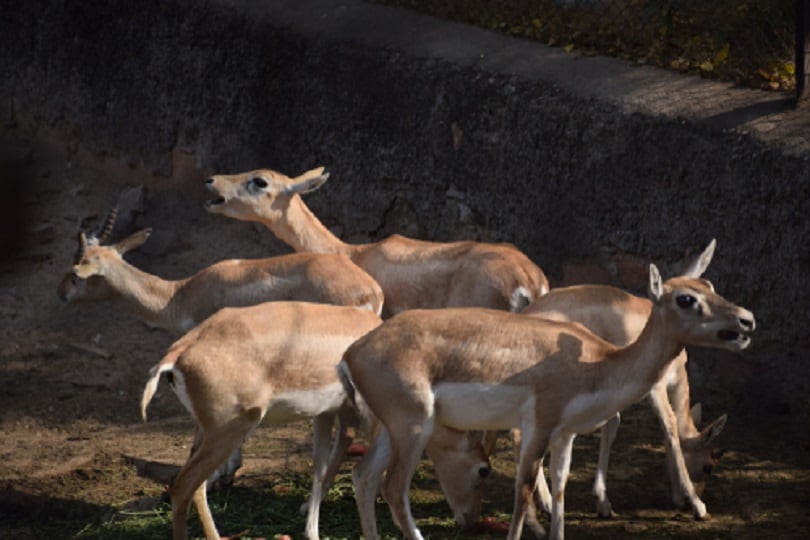
Jaipur Zoo is in the city of Jaipur in Rajasthan state in India. The zoo was opened in 1877 and is located near to the Albert Hall Museum and Ram Nivas Garden. It is divided into two parts: one for mammals and other for birds and reptiles.
The century-old Zoological Garden abounds in flora as well as a variety of wild beasts and exotic birds. The zoo’s crocodile breeding ground is renowned all across the country. Apart from housing some of the rare species of animals, the zoo is abode of some variegated species of birds that include ducks, geese, white peacock, chattering lorry, parrot and pheasant. The zoo, with its collection of 71 varieties of fauna, is open throughout the week except on Tuesdays.
- Famous for: Nature Lovers, Experience Seekers, History Buffs, Photography Enthusiasts
- Location: Museum Rd, Ram Niwas Garden, Kailash Puri, Ramniwas Bagh, Jaipur, Rajasthan 302004
- Timings: 9:00 AM – 5:00 PM Tuesday Closed
- Entry Fee: For Indians: INR 15 For Foreigners: INR 150
- When to visit: October to March
- Time Required: 30 to 45 min
- How to reach: It is in a close proximity to the Albert Hall Museum.
P.s. You might like these related resources:
- Pocket Full of Sunshine- Jaipur
- Get a sneak-peek into royalty, a voyage through history
- Plan You Next Trip to the Wonderful Weekend Getaways near Jaipur
Recent Posts
Top Picks
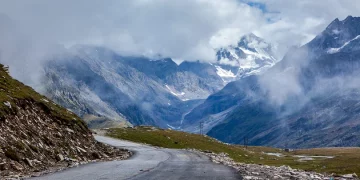
- OYO
 15 April, 2024
15 April, 2024 - Cultural Tour

- OYO
 15 April, 2024
15 April, 2024 - Cultural Tour

- OYO
 15 April, 2024
15 April, 2024 - Cultural Tour

- OYO
 15 April, 2024
15 April, 2024 - Cultural Tour

- OYO
 15 April, 2024
15 April, 2024 - Cultural Tour

Please rotate your device
Please go back to portrait mode for the best experience




 April 15, 2024
April 15, 2024 